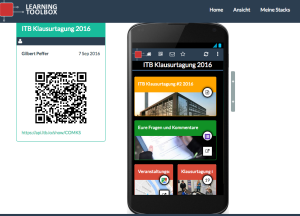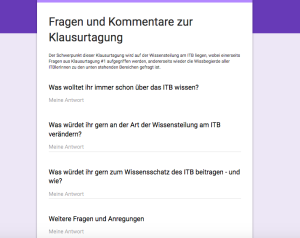Learning Layers in Leeds – Part One: Paving the way for the final run
Last week our EU-funded Learning Layers (LL) project had its last joint project consortium meeting (before the final review meeting) in Leeds, hosted by Leeds University, NHS and our software partner PinBellCom (latterly merged to EMIS group). This consortium meeting differed from many earlier ones because most of the work of the project has already been done. Also, quite a lot of strategic decisions concerning the final reporting had already been done. Therefore, we could concentrate on harvesting the most recent results and coordinating some preparatory processes for the final reporting. Yet, this meeting also had its salt and spices as well. In the first post I will give a brief overview on the meeting on the whole. In the second post I will focus on the picture that I/we gave on the construction sector pilot in some of the sessions.
Overview on the main sessions
After a quick situation assessment on the current phase of the project we started working in groups and in interim plenaries to be followed by group work:
- With the sessions on evaluation studies we had parallel groups working with the evaluation studies that had been adjusted to the progress in construction pilot and healthcare pilot. Concerning the construction pilot, our colleagues from the UIBK presented quantitative data and summarised the qualitative findings that have been discussed earlier on this blog. We had some discussions, whether we can enrich that material with some last minute interviews but that remains to be decided at the local level.
- Regarding the integrated deliverable (result-oriented website) we had common discussions on the structure, on the current phase of the main sections and on the technical implementation. Then we had parallel groups on the impact cards, ‘learning scenarios’ (or instances of change) and on the ‘research, development and evaluation approaches’. In the group work we focused on the situation in the sectoral pilots and on the complementary relations between impact cards (demonstrating particular impact), the scenarios or instances (in interpreting the findings in a conceptual and future-oriented way) and the research approaches (in presenting the contribution of the main research approaches represented in the project work).
- In a joint demonstration session Tamsin Treasure-Jones informed us, how the Learning Toolbox had been used in an adapted participative “Barcamp” session that was implemented in the AMEE (Association for Medical Education in Europe) conference in Barcelona. This example served as an inspiration and can be adapted for other research and development communities as well.
- In a practicing session we rotated between different topic tables to prepare ‘marketing pitches’ to convey the key messages of our tools/infrastructures/impact cases/research approaches. Each table was managed by moderator and the participants could take the role of presenter or listener. This helped us to get an overview and to concentrate on the core message of our presentations.
- In the Elevator pitches session we then presented the pitches (20 second pitch to qualify as presenter and a 3 minute pitch to convey the message). In this session Pablo served as real-time rapporteur and colleagues from Leeds had invited ‘critical friends’ to give feedback. This session helped us to shift us from project-internal reporting to speaking to new audiences.
- In the concluding session we discussed the organisation of the review meeting, the time plan for remaining activities and some final dissemination activities.
Altogether we made good progress in getting a common picture, what all we have achieved and how to present it. To be sure, we have several points to be settled in a number of working meetings during the coming weeks. But the main thing is that we set the course to achieving common results in the time that is available – and we are fully engaged to make it. In the next post I will take a closer look at the work with the construction pilot in the Leeds meeting.
More blogs to come …


